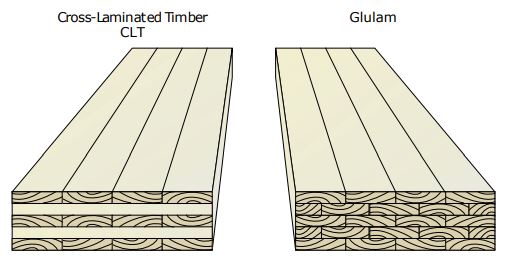Glulam vs LVL Wood: What’s the Difference?
by Admin
Posted on 09-09-2024 10:17 AM

Dipanjan
glulam vs lvl are the commonly used woods in the construction industry. Lvl, or laminated veneer lumber popularly used for inside walls. Normally used to stick framing. It is compossed of thin veneers of wood.
 Glulam, glued laminated timber, known for its strength and beauty is a wood product made by bonding together multiple layers of lumber with special adhesives.
Glulam, glued laminated timber, known for its strength and beauty is a wood product made by bonding together multiple layers of lumber with special adhesives.
Laminated veneer lumber (lvl) lvl is a widely used structural composite lumber product. It is produced by bonding thin wood veneers together in a large billet so that the grain of all veneers is parallel to the long direction. The lvl billet is then sawn to desired dimensions depending on the end-use application. Because lvl is made with scarfed or lapped jointed veneers, lvl is available in lengths far beyond conventional lumber lengths. Popular lvl applications include headers and beams, hip and valley rafters, scaffold planking, and the flange material for prefabricated wood i-joists. Parallel strand lumber (psl) psl is manufactured from veneers clipped into long strands laid in parallel formation and bonded together with an adhesive to form the finished structural section. https://en.wikipedia.org/wiki/Glued_laminated_timber
How LVL Beam and Glulam is Constructed and Manufactured?
Psl is manufactured from veneers clipped into long strands laid in parallel formation and bonded together with an adhesive to form the finished structural section. The length-to-thickness ratio of the strands in psl is around 300. Like lvl and glulam, this product is used for beam and header applications where high bending strength is needed. Psl is also frequently used as load-bearing columns.

Laminated veneer lumber (lvl) and glue-laminated timber (glulam) products are used in applications where they will be highly stressed under design loads. Drilling or notching lvl and glulam must typically be avoided. However, in situations where it is not possible, these guidelines must be followed. Glulam timber beams glulam beams are manufactured with lower-grade material in the mid-depth of the beam and higher-grade material positioned on the top and bottom. The highest grade of material is used as the outermost laminations on the tension side of the beam. Due to this, any drilling, dapping (countersinking), or notching taking place in these outermost tension laminations affects the strength and serviceability of the beam.
If the appearance of your structure is important to you, then you’ll need to consider the visual differences between glulam and lvl. Glulam is typically more visually distinctive, with visible laminations that can be arranged in various patterns for aesthetic effect. Lvl, on the other hand, typically has a more uniform appearance that can be painted or stained to match other building materials.